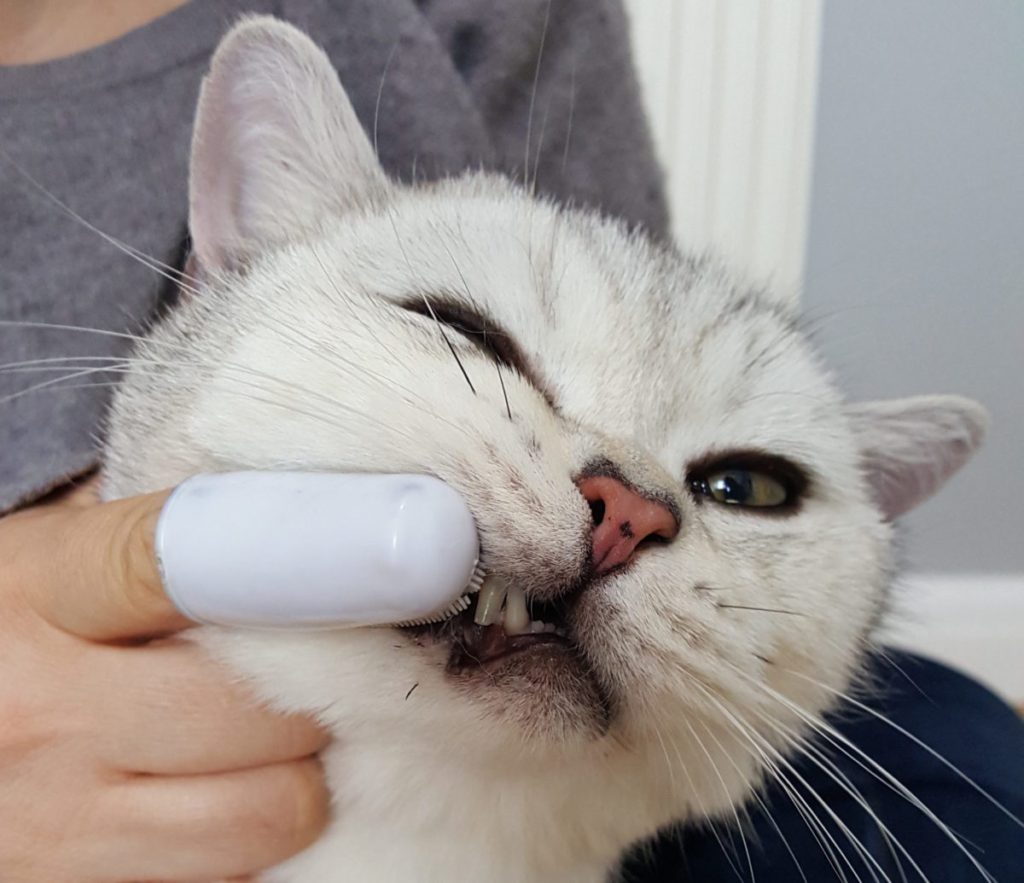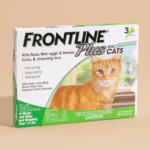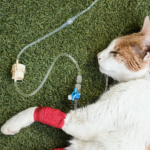Maintaining your cat’s dental health is crucial for their overall well-being. Dental issues can lead to pain, difficulty eating, and more severe health problems if not addressed promptly. Regular care and preventive measures are key to keeping your feline friend’s teeth and gums healthy. Here’s a guide on how to prevent and treat common dental issues in cats.

1. Understanding Common Dental Issues
1. Gingivitis:
Gingivitis is the inflammation of the gums, often caused by plaque buildup. Signs include:
- Red or Swollen Gums: The gums may appear red and inflamed, especially near the teeth.
- Bad Breath: A strong, unpleasant odor can indicate gum disease.
- Bleeding: The gums may bleed when touched or during brushing.
2. Periodontal Disease:
Periodontal disease is an advanced form of gum disease that affects the tissues surrounding the teeth. Symptoms include:
- Receding Gums: The gums pull away from the teeth, exposing their roots.
- Loose Teeth: Teeth may become loose or fall out as the supporting bone deteriorates.
- Painful Eating: Difficulty chewing or a preference for softer foods can signal pain from dental issues.
3. Tooth Resorption:
Tooth resorption is a condition where the tooth structure breaks down and is absorbed into the surrounding bone. It’s relatively common in cats and can cause:
- Pain and Discomfort: Affected teeth can be painful and sensitive.
- Visible Damage: Broken or missing pieces of teeth may be visible.
4. Stomatitis:
Stomatitis is a severe inflammation of the mouth’s mucous membranes. Symptoms include:
- Extreme Pain: Difficulty eating or drinking due to pain.
- Red, Swollen Mouth: Noticeable redness and swelling throughout the mouth.
- Excessive Salivation: Increased drooling or difficulty swallowing.
2. Preventing Dental Issues
1. Regular Brushing:
- Toothbrush and Toothpaste: Use a toothbrush and toothpaste specifically designed for cats. Avoid human toothpaste, as it can be harmful to pets.
- Routine Brushing: Aim to brush your cat’s teeth daily or at least a few times a week. Start slowly and make the experience as positive as possible to help your cat get used to it.
2. Dental Diets and Treats:
- Specialized Diets: Some cat foods are formulated to reduce plaque and tartar buildup. Look for dental health diets approved by veterinarians.
- Dental Treats: Treats designed to promote dental health can help clean teeth and freshen breath. Choose treats that have the Veterinary Oral Health Council (VOHC) seal of approval.
3. Regular Veterinary Check-ups:
- Routine Exams: Schedule regular veterinary check-ups to monitor your cat’s dental health. Your vet can perform professional cleanings and check for early signs of dental issues.
- Dental Cleanings: Professional dental cleanings, usually performed under anesthesia, help remove plaque and tartar that cannot be managed at home.
3. Treating Dental Issues

1. Gingivitis and Periodontal Disease:
- Professional Cleaning: If your cat shows signs of gingivitis or periodontal disease, a professional dental cleaning may be necessary. This procedure involves scaling and polishing to remove tartar and plaque.
- Home Care: Continue with regular brushing and dental care practices at home to prevent recurrence.
2. Tooth Resorption:
- Veterinary Intervention: Tooth resorption often requires veterinary treatment. Your vet may need to extract the affected tooth and provide pain relief and follow-up care.
- Pain Management: Ensure your cat receives appropriate pain management if they are experiencing discomfort from tooth resorption.
3. Stomatitis:
- Medical Treatment: Stomatitis may require medications such as anti-inflammatories or antibiotics. In severe cases, surgical intervention may be needed to remove problematic teeth.
- Ongoing Care: Follow your vet’s recommendations for managing stomatitis, including dietary changes and medications.
4. Creating a Dental Health Routine
1. Establish a Routine:
- Consistent Care: Make dental care a regular part of your cat’s routine. Consistency is key to preventing dental problems and ensuring your cat’s oral health.
- Positive Reinforcement: Reward your cat with treats and praise during and after dental care routines to make the experience more enjoyable.
2. Monitor Dental Health:
- Observe Changes: Regularly check your cat’s teeth and gums for any changes or signs of dental issues. Early detection is crucial for effective treatment.
- Report Concerns: If you notice any symptoms of dental problems, such as bad breath, difficulty eating, or swollen gums, consult your veterinarian promptly.
Conclusion
Dental health is a vital aspect of your cat’s overall well-being. By understanding common dental issues, implementing preventive measures, and seeking timely veterinary care, you can help ensure your feline friend maintains a healthy and pain-free mouth. Regular brushing, dental diets, and professional check-ups will support your cat’s dental health and contribute to their long-term happiness and quality of life.


